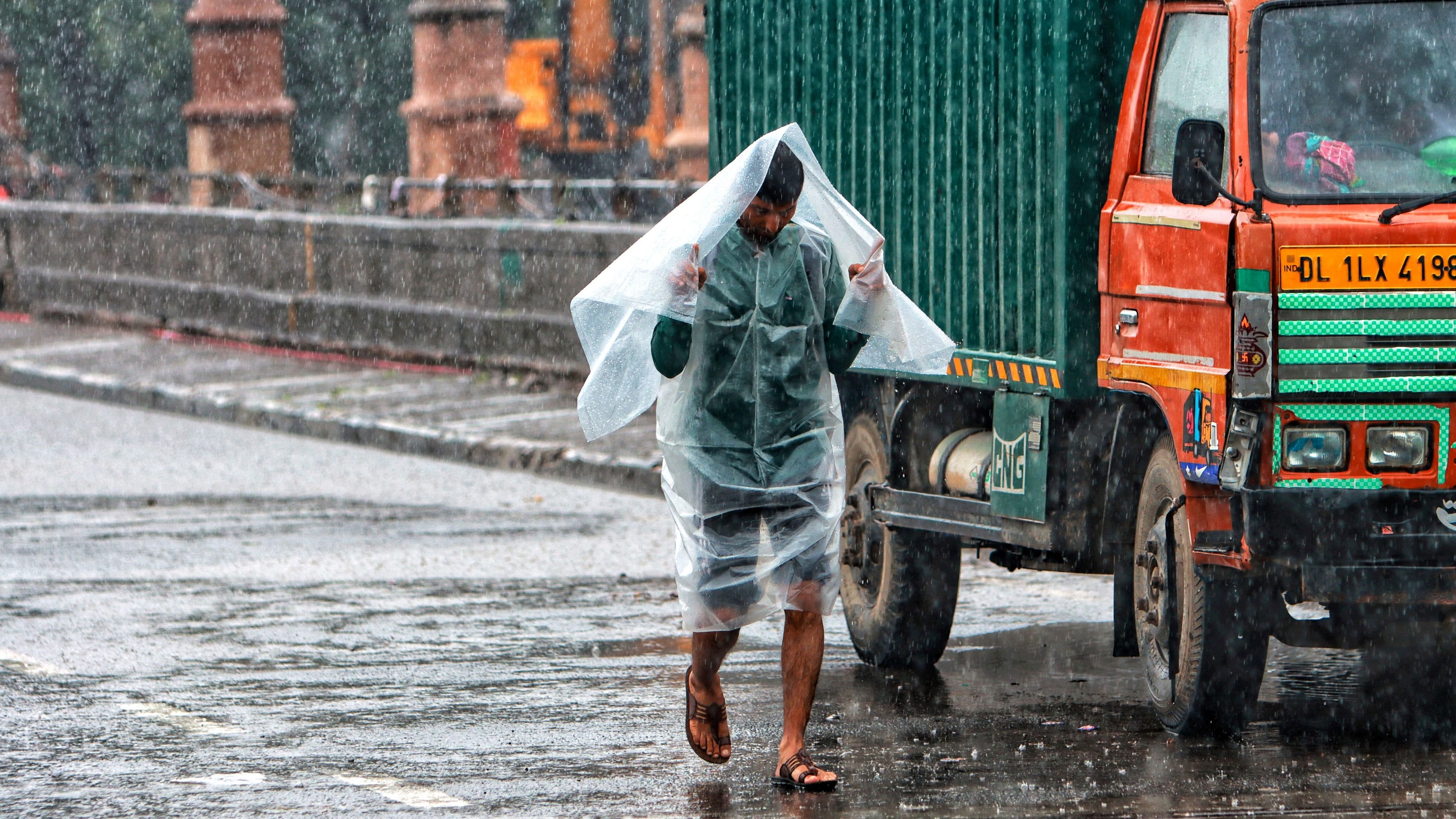
A pedestrian uses a plastic sheet to shield himself during rains.
Credit: PTI Photo
The project Mission Mausam, approved by the Union Cabinet, is an important initiative to understand the weather and climate better at a time of changes in both, and to help the country tackle them better. It is a Rs 2,000-crore project which is intended to upgrade the country’s forecasting infrastructure and capabilities to make more accurate and reliable area-specific and short- and medium-range predictions. It also aims to do research on weather modification methods. The existing weather observation network will be deepened and expanded with supercomputers, doppler radars, wind profilers, radiometers, earth system models, and other gadgets. The National Climate Mission of 2012 has done a lot to improve our understanding of the monsoon. It has developed a weather model which can be used to make daily and seasonal predictions. It has also been used for predictions about heatwaves, etc. But there are questions about the reliability of predictions.
Mission Mausam has a larger mandate and bigger ambitions. It proposes to employ the latest technologies like artificial intelligence and machine learning to study climate and use the results in areas such as agriculture, disaster management, defence, aviation, energy, water resources, etc. It plans to go beyond forecasting and to test weather interventions. The India Meteorological Department has plans to set up a cloud experiment laboratory at the Indian Institute of Tropical Meteorology, Pune, which will help to modify weather systems to “suppress and expand” rain, fog, hail, thunderstorms, etc. The government has said that this will help in controlling rainfall and lightning. The country has in recent years recorded an increase in lightning strikes and consequent deaths.
The government has said the mission will be implemented in two phases. The first phase, which runs until March 2026, will focus on expanding the observation network. The second phase will focus on adding satellites and aircraft to further enhance observational capabilities. Over a five-year period, efforts will be made to understand the climate phenomena well enough to enable the meteorological and scientific establishment to find tools and methods to manage them. This is no easy task because climate is complex and the country has a diversity of climates across its geography. It is a moot question whether a full understanding of climate and weather is possible as they are very complex and shifting phenomena. Another question is whether such understanding can help to control climate and if such control and manipulation are desirable and without adverse consequences. Geo-engineering and climate control attempts in other countries have had mixed results. India has not in any case reached a stage where such questions need to be asked. It is an ambitious task which needs to be undertaken, but with due scepticism, not gung-ho techno-optimism.